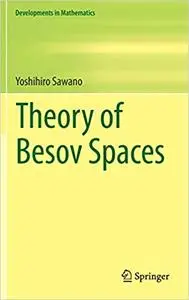Yoshihiro Sawano, "Theory of Besov Spaces "
English | ISBN: 9811308357 | 2018 | 945 pages | EPUB, PDF | 75 MB + 10 MB
English | ISBN: 9811308357 | 2018 | 945 pages | EPUB, PDF | 75 MB + 10 MB
This is a self-contained textbook of the theory of Besov spaces and Triebel–Lizorkin spaces oriented toward applications to partial differential equations and problems of harmonic analysis. These include a priori estimates of elliptic differential equations, the T1 theorem, pseudo-differential operators, the generator of semi-group and spaces on domains, and the Kato problem. Various function spaces are introduced to overcome the shortcomings of Besov spaces and Triebel–Lizorkin spaces as well. The only prior knowledge required of readers is familiarity with integration theory and some elementary functional analysis.
Illustrations are included to show the complicated way in which spaces are defined. Owing to that complexity, many definitions are required. The necessary terminology is provided at the outset, and the theory of distributions, L^p spaces, the Hardy–Littlewood maximal operator, and the singular integral operators are called upon. One of the highlights is that the proof of the Sobolev embedding theorem is extremely simple. There are two types for each function space: a homogeneous one and an inhomogeneous one. The theory of function spaces, which readers usually learn in a standard course, can be readily applied to the inhomogeneous one. However, that theory is not sufficient for a homogeneous space; it needs to be reinforced with some knowledge of the theory of distributions. This topic, however subtle, is also covered within this volume. Additionally, related function spaces―Hardy spaces, bounded mean oscillation spaces, and Hölder continuous spaces―are defined and discussed, and it is shown that they are special cases of Besov spaces and Triebel–Lizorkin spaces.



